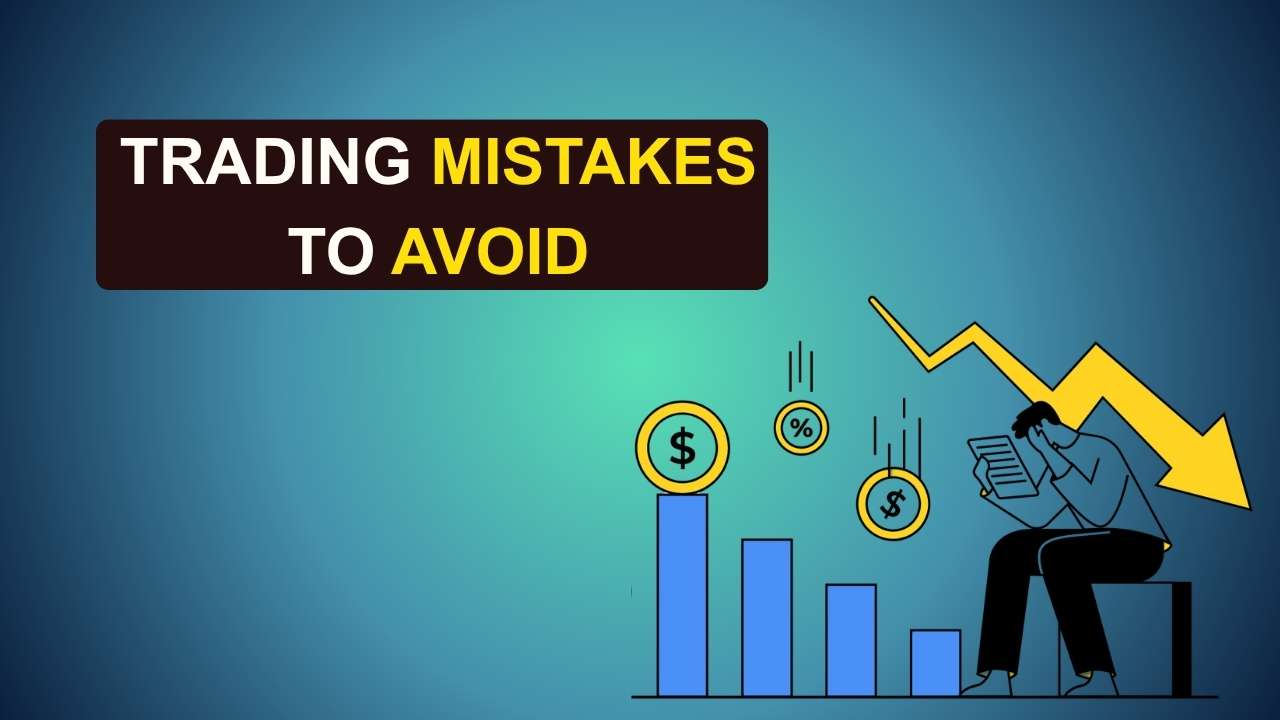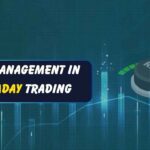Trading Mistakes to Avoid- Trading can be incredibly rewarding, but most traders don’t lose money because the market is against them. They lose because of mistakes that could have been easily avoided.
Whether you’re just starting or you’ve been trading for years, understanding these common pitfalls can transform your trading results. In this guide, I’ll walk you through the 10 most costly trading mistakes and, more importantly, show you exactly how to avoid them.
1. Trading Without a Plan
Imagine getting into your car for a road trip without knowing where you’re going or which route to take. You’ll drive around aimlessly, waste fuel, and probably end up lost. That’s exactly what trading without a plan looks like.
Why It’s Dangerous
When you don’t have a plan, you’re trading based on gut feelings, hot tips from friends, or whatever’s trending on social media. This leads to inconsistent results, emotional decision-making, and ultimately, losses.
What Your Trading Plan Must Include
- Entry criteria: What signals must appear before you enter a trade?
- Exit strategy: When will you take profits?
- Stop-loss level: Where will you cut your losses?
- Position size: How much capital will you risk on this trade?
- Target profit: What return are you aiming for?
- Timeframe: Are you day trading, swing trading, or position trading?
- Why you’re entering: What’s your analysis and reasoning?
Trading without a plan is like gambling. You might win occasionally, but you’ll lose consistently in the long run.
2. Skipping Stop-Loss Orders
A stop-loss is your insurance policy in trading. It’s the level at which you’ll automatically exit a trade if it goes against you. Yet many traders—especially beginners—avoid setting stop-losses because they hope “the market will turn around.”
Hope is not a strategy. Small losses can quickly become devastating losses if you don’t have a stop-loss in place.
Why Stop-Losses Are Critical
- Protect your capital: One bad trade without a stop-loss can wipe out weeks or months of profits.
- Remove emotions: You won’t second-guess yourself if the stop-loss is already set.
- Let you sleep at night: You know your maximum loss is limited.
- Keep you in the game: Capital preservation is the first rule of trading.
Never enter a trade without knowing exactly how much you’re willing to lose. Set your stop-loss before you hit “buy,” not after the trade moves against you.
3. Overtrading
More trades don’t equal more profits. In fact, overtrading is one of the fastest ways to drain your account.
What Is Overtrading?
It’s when you execute too many trades, often driven by:
- Excitement or boredom
- Trying to recover from a loss quickly
- Fear of missing out (FOMO)
- Addiction to the action
The Hidden Costs
- Transaction fees: Every trade costs money in brokerage, taxes, and charges.
- Increased exposure: More positions mean more risk.
- Mental exhaustion: Tracking too many trades leads to mistakes.
- Lower quality decisions: Rushing into trades without proper analysis.
Focus on quality over quantity. Wait for high-probability setups that match your strategy. It’s okay to sit out and watch sometimes—cash is also a position.
4. Trading on Emotions
Fear and greed are the two biggest killers of trading accounts. Emotional trading clouds your judgment and makes you do exactly the opposite of what you should do.
Common Emotional Mistakes
- Entering too early: FOMO makes you jump in before your setup is complete.
- Exiting too late: Greed makes you hold on hoping for bigger profits, then you give back all your gains.
- Cutting profits short: Fear makes you exit winning trades too soon.
- Holding losers too long: Hope makes you refuse to accept a loss.
- Revenge trading: Anger after a loss makes you take impulsive trades to “get even.”
How to Stay Emotionally Balanced
- Stick to your trading plan no matter what
- Take breaks after big wins or losses
- Set alerts instead of watching charts constantly
- Accept that losses are part of trading
- Don’t trade with money you can’t afford to lose
The market doesn’t care about your feelings. Successful traders stay calm and objective, executing their strategy mechanically.
5. Using Excessive Leverage
Leverage is a double-edged sword. It can multiply your profits—but it can also multiply your losses with brutal efficiency.
Many beginners see leverage as a shortcut to big profits. They think, “If I use 10x leverage, I can make 10x the money!” But they forget that losses are also magnified 10x.
The Reality of High Leverage
- Extremely risky: Small price movements can wipe out your entire position.
- Reduces margin of error: You get stopped out more easily.
- Increases stress: You’re constantly worried about margin calls.
- Creates bad habits: You take bigger risks than you should.
Example: With 10x leverage:
- A 10% profit becomes 100% gain
- But a 10% loss wipes out your entire capital
The Smart Approach
- Start with no leverage until you’re consistently profitable
- Use leverage only when you fully understand the risks
- Keep leverage low (2x-3x maximum for most traders)
- Never risk more than you can afford to lose
6. Ignoring Risk Management
Many traders focus only on finding winning trades. But professional traders focus equally—if not more—on protecting their capital.
Core Risk Management Rules
- The 2% rule: Never risk more than 2% of your total capital on a single trade.
Example: If you have ₹1 lakh:
- Maximum risk per trade: ₹2,000
- If your stop-loss is 100 points, position size should be calculated accordingly
- Maintain good risk-reward ratio: Aim for at least 1:2 (risk ₹1 to make ₹2).
- Diversify: Don’t put all your capital into one stock or one trade.
- Have a backup plan: What if multiple trades go wrong simultaneously?
You can have a 50% win rate and still be profitable with good risk management. But even a 70% win rate will destroy you without it.
7. Revenge Trading (Chasing Losses)
You just took a loss. Your first instinct is to jump right back in and “win it back.” This is called revenge trading, and it’s financial suicide.
Why It’s Dangerous
After a loss, you’re emotionally compromised. Your judgment is clouded by:
- Anger and frustration
- Desperation to recover
- Wounded ego
- Impulsiveness
What Usually Happens
- You take another trade too quickly without proper analysis
- You increase position size to “make up for it faster”
- You ignore your trading rules
- You take even bigger losses
- The cycle repeats and spirals out of control
The Right Approach
- Accept the loss: Losses are part of trading. Every professional trader has them.
- Take a break: Step away from the screen. Go for a walk. Clear your head.
- Review what went wrong: Was it a bad setup, poor execution, or just bad luck?
- Come back with a clear mind: Only trade again when you’re emotionally neutral.
Trying to “get revenge” on the market is like being angry at the ocean. It doesn’t care, and you’ll only hurt yourself.
8. Following Tips and Rumors
Telegram groups promising “sure shot” calls. WhatsApp messages with “insider information.” TV experts shouting stock names. Social media influencers hyping their picks.
Sound familiar?
The Problem
These sources are:
- Often wrong
- Have their own agendas
- Don’t know your risk tolerance or financial goals
- Don’t take responsibility when trades go wrong
Real-Life Scenario
Someone gives you a “hot tip” on a stock. You buy it without analysis. The stock falls. You have no idea why you bought it, where to place your stop-loss, or when to exit. You’re completely helpless.
The Smart Trader’s Approach
- Do your own analysis: Understand why you’re taking a trade.
- Know your charts: Technical analysis gives you objective entry and exit points.
- Trust data, not emotions: Look at price action, volume, and indicators.
- Be independent: Your money, your decision, your responsibility.
- Golden rule: Never take a trade you don’t understand. If you can’t explain why you’re entering, don’t enter.
9. Lack of Patience and Discipline
The market rewards patience. But most traders want everything now.
Common Impatience Mistakes
- Exiting winners too early: You made 2% profit and exit, only to watch the stock rally 20%.
- Entering too soon: FOMO makes you jump in before your setup confirms.
- Changing strategies constantly: You switch from swing trading to day trading to scalping, never mastering anything.
- Over-analyzing: You study 20 different indicators and get paralyzed by information overload.
The Path to Consistency
- Stick to your strategy: Give it time to prove itself (at least 100 trades).
- Wait for setups: Not every day has tradeable opportunities. Be okay with doing nothing.
- Let winners run: If your analysis says hold, don’t exit just because you have some profit.
- Trust the process: Results compound over time, not overnight.
Professional traders are boring. They do the same thing repeatedly. Consistency beats excitement.
10. Not Keeping a Trading Journal
This might seem boring, but a trading journal is one of the most powerful tools you have. Yet 90% of traders don’t maintain one.
Your trading journal should include:
- Trade date & time
- Entry/exit price
- Stop-loss
- Reason for entering the trade
- Profit/loss amount
- What you learned
Why It’s Powerful
- Identify patterns: You’ll see which setups work best for you.
- Learn from mistakes: You’ll stop repeating the same errors.
- Track progress: You’ll see your improvement over time.
- Build confidence: Seeing your wins documented reinforces good habits.
- Refine strategy: Data shows what works and what doesn’t.
Example: After 50 trades, you review your journal and realize you’re 70% profitable on breakout trades but only 40% on reversal trades. Now you know what to focus on.
Set aside 10 minutes after every trading day to update your journal. This small habit can transform your results.
Bonus Mistake: Not Upgrading Your Skills
The market evolves. New patterns emerge. Strategies that worked last year might not work now. If you’re not learning, you’re falling behind.
What to Keep Learning
- New trading strategies and patterns
- Technical indicators and their applications
- Market psychology and behavioral finance
- Risk management techniques
- Trading psychology and discipline
- Technology and trading platforms
How to Stay Sharp
- Read trading books (classics like “Reminiscences of a Stock Operator”)
- Follow credible traders and analysts (not tip providers)
- Take courses on technical analysis
- Practice on paper trading or simulators
- Join genuine trading communities
- Analyze your past trades regularly
Remember: Trading is a skill that requires continuous improvement, just like any profession.
Your Action Plan to Avoid These Mistakes
Here’s how to implement what you’ve learned:
This Week:
- Create a written trading plan
- Set up stop-losses for all positions
- Start your trading journal
- Calculate your proper position size based on the 2% rule
This Month:
- Review your journal weekly
- Identify your most common mistake
- Focus on eliminating that one mistake
- Take at least one trading course or read one book
This Year:
- Build consistency with your strategy
- Track your win rate and average returns
- Gradually improve your risk-reward ratio
- Become a disciplined, patient trader
Final Thoughts
Trading mistakes aren’t just about losing money—they’re about losing confidence, time, and opportunities. The good news? Every single mistake on this list is completely avoidable.
You don’t need to be the smartest person in the room. You don’t need insider information. You don’t need to predict the future. You just need to:
- Have a plan
- Manage risk
- Control emotions
- Stay disciplined
- Keep learning
The difference between consistently profitable traders and those who blow up their accounts isn’t talent or luck—it’s avoiding these fundamental mistakes.
Mistakes will happen. You’ll take bad trades, miss good opportunities, and have losing streaks. That’s normal. The key is not repeating the same mistakes over and over.
Learn from each mistake, document it in your journal, adjust your approach, and move forward. Trading success is built one good decision at a time.
Start today. Create your plan. Set your stop-losses. Begin your journal. And commit to being better tomorrow than you were today.
Learn More:
- PMS vs Mutual Funds: Should You Invest in PMS as well as Mutual Funds? A Complete Guide for Smart Investors
- Difference in Expense Ratio Between Direct and Regular Mutual Funds
- Best Small-Cap Index Funds
- 10 Debt Mutual Funds That Outperformed in the Last 1 Year with 10% to 24% Returns in 2025
- How to Invest in Index Funds in India
Trading Mistakes to Avoid: FAQs
What’s the single biggest mistake new traders make?
Trading without a proper plan and risk management strategy. Most beginners focus only on finding winning trades while ignoring capital protection, which is even more important.
Is emotional trading really that harmful?
Absolutely. Emotional trading leads to impulsive decisions, revenge trading, and abandoning your strategy—which are the fastest ways to lose money. Successful trading requires a calm, mechanical approach.
How important is risk management compared to finding good trades?
Risk management is more important. You can have a 60% win rate and still lose money with poor risk management. But even a 40% win rate can be profitable with excellent risk management and proper risk-reward ratios.
Should beginners use leverage?
No. Beginners should avoid leverage until they’re consistently profitable without it. Learn to trade profitably with your own capital first, then consider minimal leverage once you fully understand the risks.
How can I improve my trading skills consistently?
Practice regularly, maintain a detailed trading journal, study charts and patterns, learn from your mistakes, take structured courses, and stay updated on market conditions. Most importantly, review your journal weekly to identify patterns in your behavior.
Disclaimer: This article is for educational purposes only and not trading advice. Trading in the stock market carries risks, and you can lose money. Past performance doesn’t guarantee future results. The examples and scenarios are for illustration only. Always do your own research, understand the risks, and consider consulting with a certified financial advisor before trading. Only trade with money you can afford to lose.














